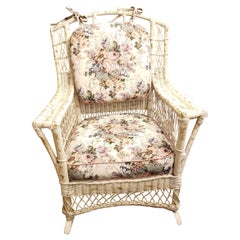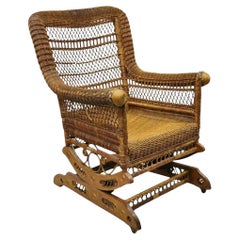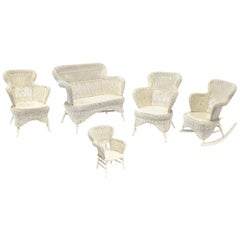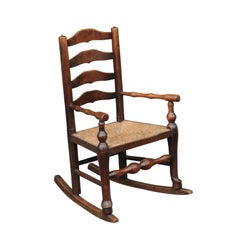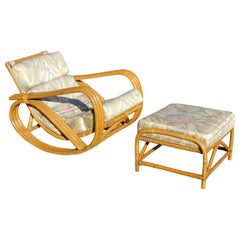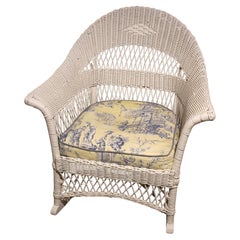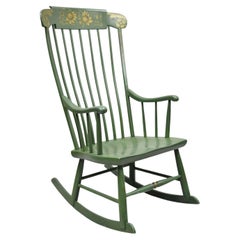Rocking Chairs
Mid-19th Century American Victorian Antique Rocking Chairs
Metal
Late 19th Century Unknown Victorian Antique Rocking Chairs
Wicker
1890s American American Colonial Antique Rocking Chairs
Wood
1890s American Victorian Antique Rocking Chairs
Wicker
Early 19th Century English Georgian Antique Rocking Chairs
Rush, Wood
1940s American Art Deco Vintage Rocking Chairs
Bamboo, Wicker, Rattan
Late 19th Century American Victorian Antique Rocking Chairs
Wicker
Late 19th Century British Late Victorian Antique Rocking Chairs
Textile, Walnut
Mid-20th Century Victorian Rocking Chairs
Bamboo, Cane, Bentwood
20th Century European Biedermeier Rocking Chairs
Wood
1890s French Mid-Century Modern Antique Rocking Chairs
Wood
Early 1900s Victorian Antique Rocking Chairs
Cane, Walnut
Early 1900s Swedish Antique Rocking Chairs
Pine, Paint
20th Century Rocking Chairs
Wicker
Early 20th Century Austrian Vienna Secession Rocking Chairs
Cane, Bentwood
Late 19th Century American Victorian Antique Rocking Chairs
Cane, Wood
Early 20th Century American Mid-Century Modern Rocking Chairs
Rattan
Mid-20th Century American American Colonial Rocking Chairs
Wood, Paint
Early 20th Century Victorian Rocking Chairs
Wicker, Rattan, Hardwood
20th Century American Other Rocking Chairs
Wicker
20th Century American Mission Rocking Chairs
Wicker, Upholstery
Vintage, New and Antique Rocking Chairs
The phrase “rocking chair” didn’t find its way into the dictionary until the mid-18th century. While most of the sitting furniture that we use in our homes originated in either England or France, the iconic rocking chair is a quintessentially American piece of furniture.
A Philadelphia cabinetmaker’s bill for a proto-rocking chair issued in 1742, which identified the seat as a “Nurse Chair with rockers,” is the earliest surviving evidence of this design’s humble beginnings. The nurse chair was a low side chair intended for nursing women, so giving it a soothing rocking motion made sense. Rocking chairs, which saw a curved slat affixed to the chairs’ feet so that they could be literally rocked, quickly gained popularity across the United States, garnering a reputation as a seat that everyone could love. They offered casual comfort without the expensive fabrics and upholstery that put armchairs out of many families’ budgets.
Rocking chairs are unique in that they don’t just offer a place to rest — they offer an opportunity to reminisce. The presence of one of these classic pieces stirs up our penchant for nostalgia and has the power to transform a space. They easily introduce a simple country feel to the city or bring the peaceful rhythm of a porch swing into a sheltered sunroom. Although craftsmen took to painting and stenciling varieties of the chairs that emerged in New England during the 19th century, the most traditional rocking chairs are generally unadorned seats constructed with time-tested materials like wood and metal. As such, a minimalist vintage rocking chair can be ushered into any corner of your home without significantly disrupting your existing decor scheme or the room’s color palette.
In the decades since the first rocker, top designers have made the piece their own. Viennese chair maker Michael Thonet produced a series of rockers in the middle of the 19th century in which the different curved steam-bent wood parts were integrated into fluid, sinuous wholes. Mid-century modernists Charles and Ray Eames added wooden rockers to their famous plastic shell armchair, while Danish designer Frank Reenskaug opted for teak and polished beech, introducing pops of color with small cushions (a precursor to the bold works that would follow in the 1970s and 1980s).
No matter your personal style, let 1stDibs pair you with your perfect seat. Deck out your porch, patio or parlor — browse the vintage, new and antique rocking chairs in our vast collection today.
